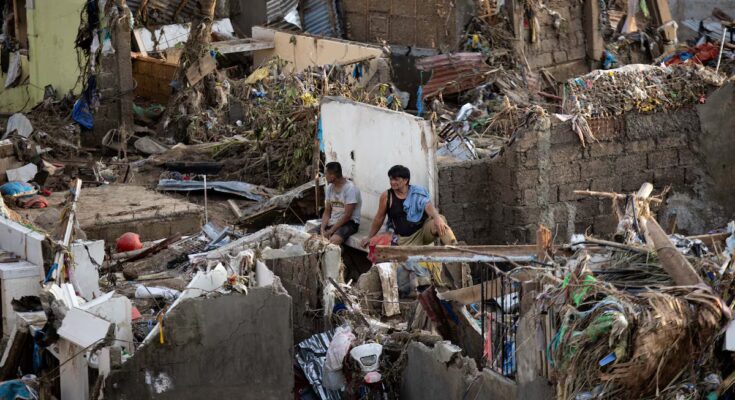At least 114 people died and 127 were missing after the typhoon crossed the Philippines Kalmaegione of the strongest of the season, according to the latest death toll provided by the Civil Protection on Thursday. Some media, also citing official sources, increase the death toll to 140.
The cyclone, which crossed the central Philippines between Tuesday and Wednesday with hurricane-force winds and intense rain, hit the island of Cebu particularly hard, but leaves a trail of destruction affecting more than two million people across the country. The next stop was Vietnam, where he landed this afternoon.
“Due to the extent of the hit in the areas affected by the typhoon, I have approved the declaration of a state of national disaster,” announced the president, Ferdinand Marcos Jr., after a meeting to address the consequences of the disaster.
Nearly two million people in more than 360 locations have been affected by Kalmaegi, known in the country as Tino, of whom more than half a million are displaced, according to the latest data from the National Disaster Risk Reduction and Management Council (NDRRMC). The typhoon, which hit the Philippines seven times, submerged entire cities of Cebu – one of the economic and commercial centers of the country and an area already significantly weakened after the 6.9 magnitude earthquake suffered last October – and the island of Negros, in the central region of the Visayas.
The images circulating on television and on social networks show people taking refuge on the roofs of their homes and vehicles and containers of goods moved by strong water currents. Among the victims were six soldiers who died when their helicopter crashed on the island of Mindanao on Tuesday while they were taking part in rescue operations.
As the Philippines recovers from the disaster in the center of the archipelago, authorities on the northern island of Luzon – where the capital Manila is located – are preparing for the possible arrival of a tropical storm that could develop into a super typhoon before making landfall on Monday, the Meteorological Department warned.
The Philippines experiences about 20 typhoons and tropical storms a year, mostly in the rainy season, which usually starts in June and ends in November or December, and scientists warn that the storms are becoming more powerful due to climate change.
Kalmaegi has already left Philippine territorial waters for Vietnam’s central provinces, where it landed early Thursday afternoon. Vietnamese authorities have ordered the mobilization of army troops for disaster prevention and mitigation tasks in an area that was also recently hit by severe flooding.



